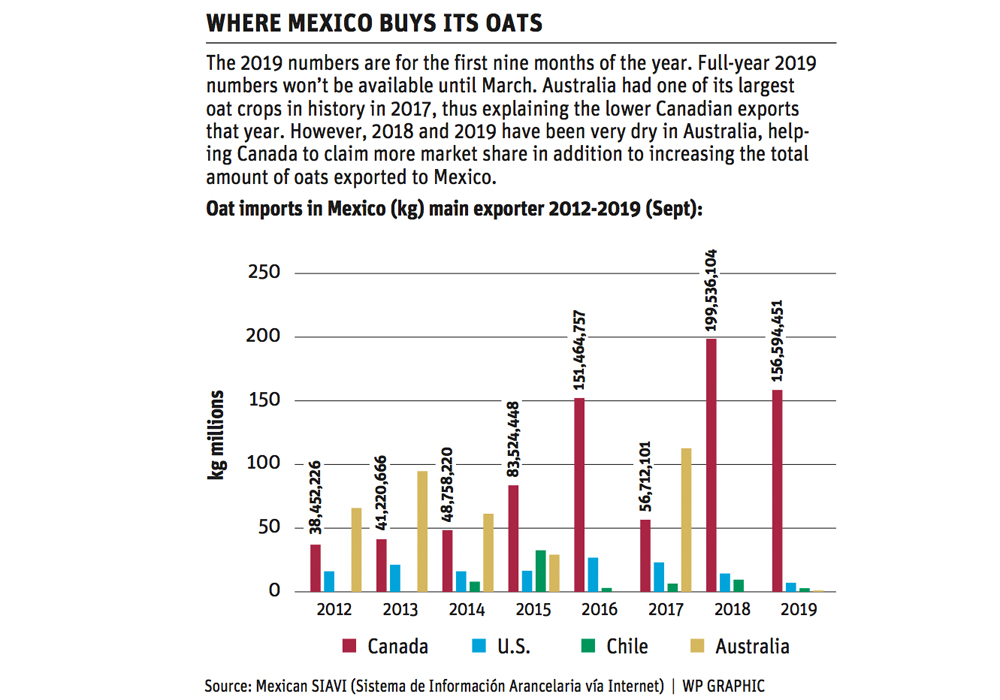Selling oats | Transportation issues mean growers may not be able to capitalize on good prices
The market signal says sell, the elevator says full and the trucking company says sorry.
That’s the situation facing prairie oat growers as they look at a big futures market inversion but a commercial rail and trucking system that’s run out of capacity.
“It’s just watching a train go by. You can’t jump on it,” OatInsight analyst Randy Strychar said about December oat futures prices that are high compared to March.
“It looks really nice on paper, but there isn’t much he can do about it.”
Read Also

Food label to change after glyphosate lawsuit
General Mills has settled a lawsuit over the phrase “Made with 100% Natural Whole Grain Oats” on its Nature Valley granolabars
Futures prices usually increase the further out they are, with the lowest priced futures being the nearby contract. Farmers often choose to price their crop using deferred months and delivering later, depending on the amount of premium leading into further out months.
Inversions, in which nearby futures are priced higher than later months, are rare and seen as a signal to sell immediately because holding crops into the future will likely bring a penalty rather than a premium.
It’s the situation now seen in oat futures with the December Chicago oat contract on Oct. 21 standing at $3.35 per bushel and the March contract at $3.14.
Farmers who want to move oats now to earn cash, clear bin space and benefit from the inversion are discovering that elevators aren’t taking anything beyond what they are already committed to, while trucking companies are booked for weeks and have increased hauling rates.
“Movement has been a little bit tough because of everything being plugged up,” said Brian Voth, an Agri-Trend marketing adviser from Ste. Agathe, Man.
Farmers have big crops of oats to move but no way to move them.
Lorne Boundy of Paterson Grain said farmers and end users are now separated by a logistics system that can’t get the oats from Western Canada to the Minneapolis area, where commercial use is based and the futures contract pegged. Buyers and people with short futures positions have been forced to boost prices in the delivery area, but farmers with crop can’t get it there.
“There might be one heck of a smoking bid at the buyer end, but getting it there is a different story,” said Boundy.
Inversions in oat prices, both futures and cash, have become common since spring, perplexing many about their true cause. Oat stocks in the Minnesota area have dropped to low levels after previous years of ample supplies, so the market becomes nervous when problems such as Canada’s congested logistics system arise.
The futures market is particularly nervous because of low trading volumes in the oats contract, which allows any sort of squeeze to drive prices quickly one way or the other.
People who are caught short have to chase prices higher to close out their positions, and the physical grain market has a limited ability to mitigate and benefit from the spreads because there is no way to get the grain there.
Strychar said companies caught too short might even have to import Scandinavian oats and ship them up the Mississippi River, although the price is presently prohibitive.
Strychar said farmers aren’t panicking about the situation. Most are bullish about oats, and like oat growers around the world, appear to be willing to sit on their crops for a few months before selling them.
As well, the recent pattern of the oat futures inversion has been for the value of the next month contract rise to match the value of the expiring contract.
As a result, waiting hasn’t been a disaster.
However, the underlying oat market will likely suffer because of the high price of oats compared to corn. Horse feed demand has plummeted, Strychar said, and southern U.S. feed manufacturers are switching to cheaper alternatives.


















